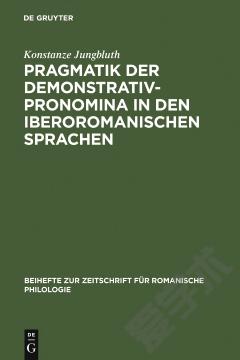Pragmatik Der Demonstrativpronomina In Den Iberoromanischen Sprachen
Whereas in Spanish the tradition of three demonstrative pronouns remains unbroken, the paradigms of modern Catalan and Brazilian Portuguese are exclusively dual in this respect. The dyad encompassing the speaker and hearer(s) controls the usage of these pronouns. It defines the different spaces that can be characterized as inside and outside, speaker-sided and hearer-sided, proximal, medial, and distal. For purposes of comparison, German, Finnish, and Japanese are drawn upon alongside the Romance languages.
{{comment.content}}








 京公网安备 11010802027623号
京公网安备 11010802027623号